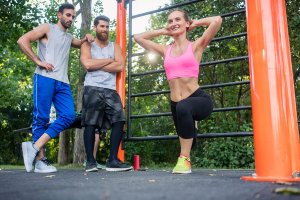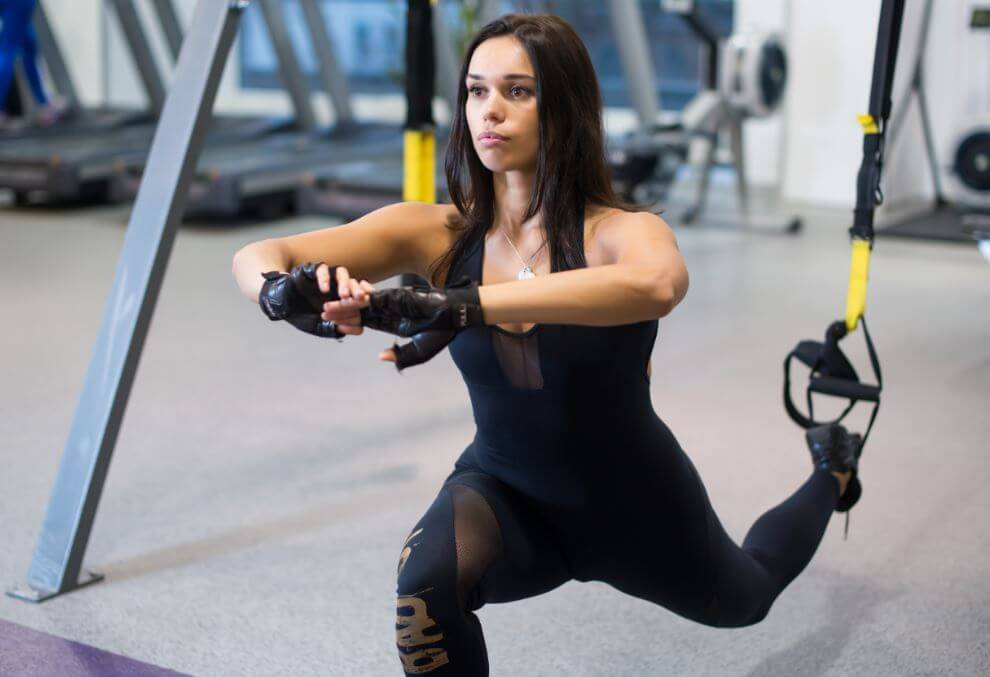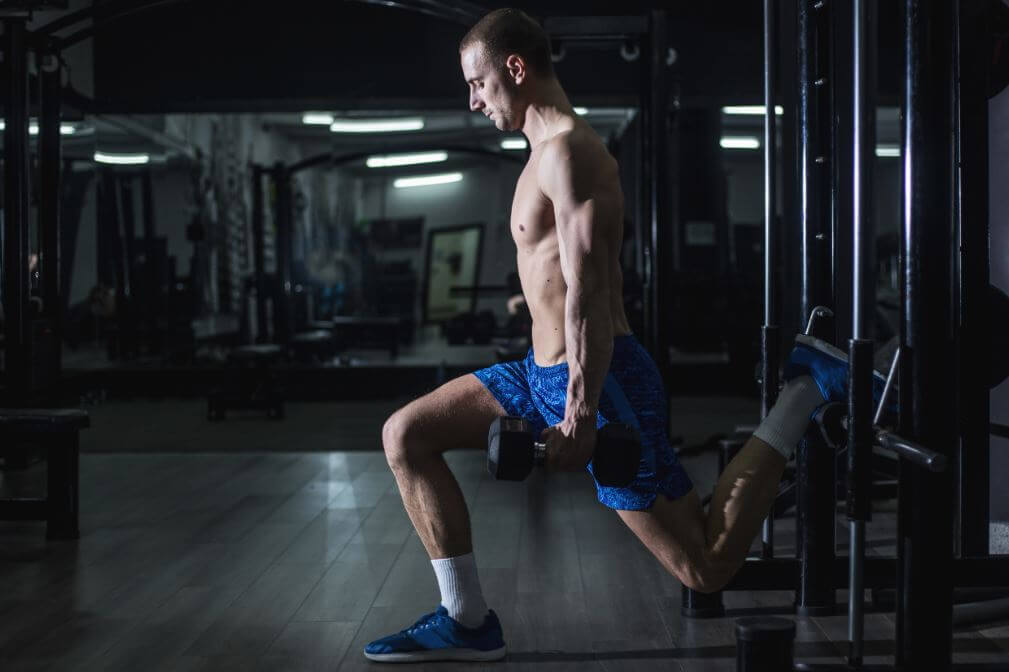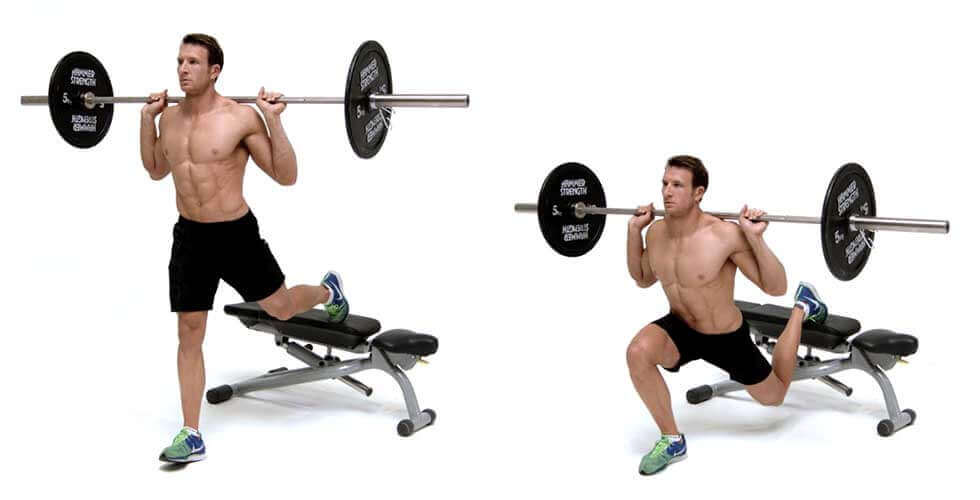Carve your Buttocks with the Bulgarian Squat

Have you heard about the Bulgarian squat? These are a squat variation that targets all your rear muscles, helping you achieve rounded, lifted buttocks. What’s not to love? Here’s everything you need to know about this movement, its benefits and how to do it. Happy squatting!
A fit body is the result of great effort, dedication and time. Because of this, many people perform various physical workouts to get a so-called “perfect figure”. For those looking for that coveted hourglass shape, Bulgarian squats are a great option!
As with other types of squats, Bulgarian or Romanian squats target the legs and buttocks. Because this is one of the largest muscle areas in the body, most athletes benefit from strengthening it.
For athletes, training the buttocks and thighs lets you have greater resistance, increase muscle performance and avoid future injuries. In addition, another factor that’s not negligible -and much appreciated by many people- is that toning brings an aesthetic value that contributes to raising self-esteem.
What is a Bulgarian squat?
There are different types of squats. The traditional or classic is one that’s performed in-depth, with the movement of the two legs simultaneously and as low as possible. Classic squats work your thighs and buttocks, as well as your core to help you keep your balance.
On the other hand, Bulgarian squats only work one leg at a time. With this movement, the working leg is forced to handle balance and strength at the same time.
A research team found that Bulgarian squats require you to use more muscles in your legs and core in order to keep your balance.
Bulgarian squats involve three of the most important joints in the body: hips, ankles, and knees.
This movement focuses on unilaterality and muscular stability, based on the combination of strength and power. In this way, it strengthens the quadriceps, hamstrings, and buttocks in greater depth than any other type of squats.
Benefits of Bulgarian squats
For starters, Bulgarian squats strengthen the buttocks. This keeps your whole body aligned and stable, allowing you to walk, jump and run.

As you train with Bulgarian squats, you’re strengthening 17 other muscles. In turn, this protects your hips and your range of movement. Everything goes into action with this squat!
How to perform the Bulgarian squat?
For a Bulgarian squat, you need to have a bench, chair or stool that stands at knee-height or so.
Then, stand with your feet hip-width apart and a couple of feet away from the bench. Next, place one foot behind you and over the bench.
Taking a deep breath, lower the front leg until your knee touches the floor. Then, start standing up, expelling the air from the lungs gradually.
Throughout this exercise, it’s important to keep your back and chest aligned at all times, to avoid injury or poor form.
To ensure you’re safe, avoid performing Bulgarian Squats on unstable furniture that won’t give you adequate support.
On the other hand, strive to keep your knee behind your toes at all times to avoid straining your knee. In general, Bulgarian squats should be performed slowly and in a controlled matter.
Once the basic technique is mastered, this is the kind of exercise that can be performed alone without any issues.
Bulgarian Squats variations
To add intensity, you can also perform these types of squats with dumbbells or with a weighted barbell. Once the initial technique is perfected, it’s totally valid to add some resistance to the training.
With added weight, the toning of the buttocks area is increased and the stability of the hip is improved. It’s a perfect exercise for professional runners.

The first variant we’ll cover is adding a dumbbell. Because of the extra weight, you should step further away while letting your hands hang to the floor. As with the main exercise, your back and chest should be straight and face forward.
You can also use a weighted barbell over your shoulders instead of holding two dumbbells. In that case, your form should be similar as if you were performing a weighted squat.

If you don’t have any weights, you can also hold your arms in front of you. This will develop your strength and balance even further.
Overall, the Bulgarian squat is a very complete exercise that offers a more targeted approach than regular squats. Even though it does require a bit of extra training and balance, it can be easy to learn. The results are amazing!
Have you heard about the Bulgarian squat? These are a squat variation that targets all your rear muscles, helping you achieve rounded, lifted buttocks. What’s not to love? Here’s everything you need to know about this movement, its benefits and how to do it. Happy squatting!
A fit body is the result of great effort, dedication and time. Because of this, many people perform various physical workouts to get a so-called “perfect figure”. For those looking for that coveted hourglass shape, Bulgarian squats are a great option!
As with other types of squats, Bulgarian or Romanian squats target the legs and buttocks. Because this is one of the largest muscle areas in the body, most athletes benefit from strengthening it.
For athletes, training the buttocks and thighs lets you have greater resistance, increase muscle performance and avoid future injuries. In addition, another factor that’s not negligible -and much appreciated by many people- is that toning brings an aesthetic value that contributes to raising self-esteem.
What is a Bulgarian squat?
There are different types of squats. The traditional or classic is one that’s performed in-depth, with the movement of the two legs simultaneously and as low as possible. Classic squats work your thighs and buttocks, as well as your core to help you keep your balance.
On the other hand, Bulgarian squats only work one leg at a time. With this movement, the working leg is forced to handle balance and strength at the same time.
A research team found that Bulgarian squats require you to use more muscles in your legs and core in order to keep your balance.
Bulgarian squats involve three of the most important joints in the body: hips, ankles, and knees.
This movement focuses on unilaterality and muscular stability, based on the combination of strength and power. In this way, it strengthens the quadriceps, hamstrings, and buttocks in greater depth than any other type of squats.
Benefits of Bulgarian squats
For starters, Bulgarian squats strengthen the buttocks. This keeps your whole body aligned and stable, allowing you to walk, jump and run.

As you train with Bulgarian squats, you’re strengthening 17 other muscles. In turn, this protects your hips and your range of movement. Everything goes into action with this squat!
How to perform the Bulgarian squat?
For a Bulgarian squat, you need to have a bench, chair or stool that stands at knee-height or so.
Then, stand with your feet hip-width apart and a couple of feet away from the bench. Next, place one foot behind you and over the bench.
Taking a deep breath, lower the front leg until your knee touches the floor. Then, start standing up, expelling the air from the lungs gradually.
Throughout this exercise, it’s important to keep your back and chest aligned at all times, to avoid injury or poor form.
To ensure you’re safe, avoid performing Bulgarian Squats on unstable furniture that won’t give you adequate support.
On the other hand, strive to keep your knee behind your toes at all times to avoid straining your knee. In general, Bulgarian squats should be performed slowly and in a controlled matter.
Once the basic technique is mastered, this is the kind of exercise that can be performed alone without any issues.
Bulgarian Squats variations
To add intensity, you can also perform these types of squats with dumbbells or with a weighted barbell. Once the initial technique is perfected, it’s totally valid to add some resistance to the training.
With added weight, the toning of the buttocks area is increased and the stability of the hip is improved. It’s a perfect exercise for professional runners.

The first variant we’ll cover is adding a dumbbell. Because of the extra weight, you should step further away while letting your hands hang to the floor. As with the main exercise, your back and chest should be straight and face forward.
You can also use a weighted barbell over your shoulders instead of holding two dumbbells. In that case, your form should be similar as if you were performing a weighted squat.

If you don’t have any weights, you can also hold your arms in front of you. This will develop your strength and balance even further.
Overall, the Bulgarian squat is a very complete exercise that offers a more targeted approach than regular squats. Even though it does require a bit of extra training and balance, it can be easy to learn. The results are amazing!
All cited sources were thoroughly reviewed by our team to ensure their quality, reliability, currency, and validity. The bibliography of this article was considered reliable and of academic or scientific accuracy.
- Rutina básica para realizar en casa. Extraído de: https://www.bacterianutritiva.es/rutina%20mujer/rutina%20b%E1sica%20para%20casa%20mujeres.pdf
- Dinç, Nurten & Hayta, Ümit. (2018). Effect of Bulgarian Split Squat Exercise on 20 Meters Sprint Performance. Journal of Education and Training Studies. 6. 141. 10.11114/jets.v6i9.3391.
This text is provided for informational purposes only and does not replace consultation with a professional. If in doubt, consult your specialist.








